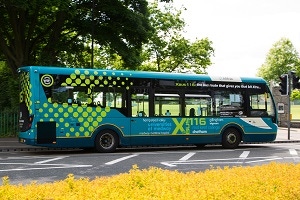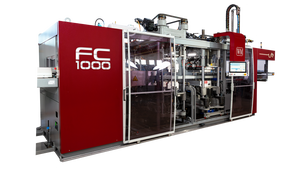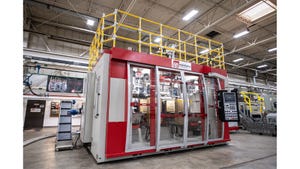A kinetic energy recovery system (KERS) with a carbon fiber composite flywheel at its core is intended to further improve bus fuel efficiency and reduces the KERS weight and cost, helping to improve the bus operator payback. The new design has reduced parts count and system weight by 30% and 80 kg respectively and incorporates a simpler 2x2x2 clutched flywheel transmission system reducing 'coast down' losses and improving efficiency during torque transfer.
February 4, 2016

The KERS captures the kinetic energy that is normally wasted when the bus is braking and stores it in a steel and carbon fiber flywheel weighing 8.5 kg and spinning at up to 30,000 rpm. The energy stored in the flywheel is then delivered back to the wheels reducing the energy that is required from the engine to accelerate the bus and so reducing the fuel consumption of the vehicle. The process of capturing, storing and releasing energy back to the wheels is fully automated, giving a high quality driving experience. The Flybrid KERS technology was developed in Formula 1 and has been applied in a variety of vehicle applications including motorsport, passenger road cars and excavators.
|
KERS-equipped bus boasts reduced |
KERS developer Torotrak Group and coach builder Wrightbus have already completed an in-service trial of a Wrightbus StreetLite midi bus fitted with the Flybrid mechanical KERS. The trial was conducted with Arriva, one of the largest bus operators in the UK.
The trial was conducted on a standard bus route in Gillingham, Kent from March 2015. It successfully demonstrated the performance of the Flybrid KERS under real-world operating conditions including the capture, storage and release of energy from the brakes and the drivability of the system. The learnings from the trial have already proven invaluable in selecting the operating strategy for the volume production system, which will be a second generation design.
Already undergoing detailed testing on rigs and in a new Euro VI StreetLite bus, this new KERS design is on track to commence production from mid 2016 onwards. Tier 2 suppliers across the UK and other parts of the EU have been nominated and the manufacture of production tooling is currently underway.
Adam Robson, Torotrak Group CEO, said: "This is a very exciting time for the Group with the bus KERS project that started in 2012 going into commercial production from the middle of this year. I am delighted with the progress we have made and we look forward to delivering our first systems to Wrightbus during Q3 2016."
The Flybrid KERS for buses is reportedly a highly efficient and robust hybrid technology, ideal for the long service life and repeated stop-start duty cycle of public service buses. Using common materials and manufacturing methods, and removing the requirement for replacement batteries during service life the flywheel-based technology can offer exceptional value and an opportunity for widespread hybridization.
Brian Maybin, Wrightbus Engineering Director, said: "After the invaluable in-service trials with Arriva, Wrights and Torotrak have confirmed that the next generation of flywheel is now under extensive durability testing, and after successful fuel trials, will be put into service trials from May 2016. Production vehicles will be able to be delivered into service late in 2016."
Ian Tarran, Engineering Director at Arriva UK Bus commented: "As one of the largest bus operators in the UK with over 5,900 buses, improving the efficiency of our bus fleet and reducing emissions is important to us and our customers. Having collaborated with Torotrak and Wrightbus on the flywheel project since 2012 we are looking forward to installing Flybrid KERS across our bus fleet from Q3 2016 onwards."
You May Also Like



